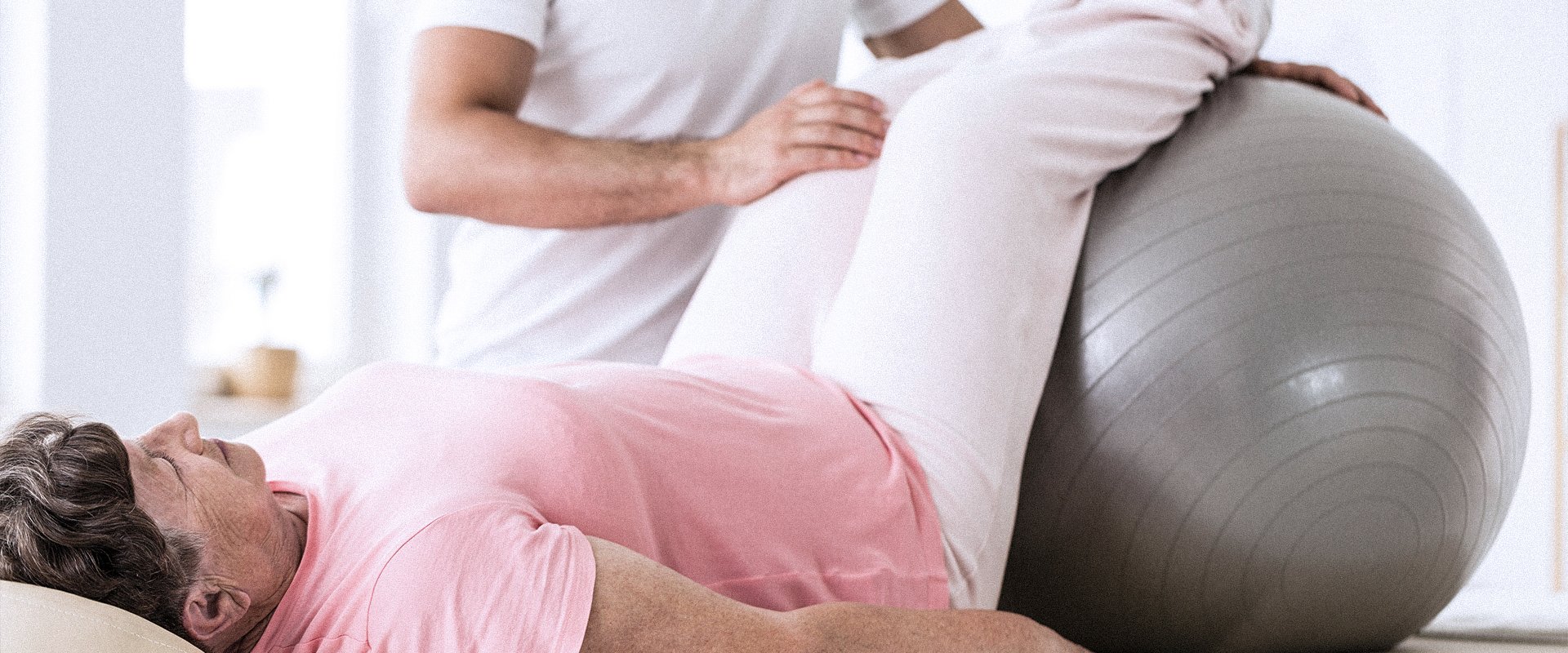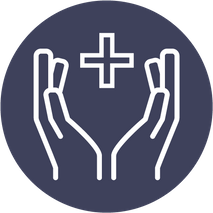
Physical Therapy for Osteoporosis
AT EVOLVE
Physical Therapy for Osteoporosis
HOW CAN PHYSICAL THERAPY HELP MANAGE OSTEOPOROSIS?
Osteoporosis refers to thinning and weakening of the bone that can happen at any age. The decline in bone density associated with osteoporosis places individuals at elevated risk for fracture. Having one fracture can increase the risk of having another and is associated with higher rates of morbidity and mortality. Treatment for osteoporosis is focused on building bone density and preventing falls and movements that can result in a fracture. Physical therapists can assist patients with osteoporosis in preventing falls, developing lifestyle habits to support good bone health and in establishing an exercise program that can help build bone or minimize loss of bone density.
WHAT DOES PHYSICAL THERAPY FOR OSTEOPOROSIS LOOK LIKE?
My team of therapists and I will start by getting to know your concerns and goals and to learn about your osteoporosis. Next we will perform a thorough physical exam to determine how strong and flexible your muscles and joints are, to examine any areas of pain, and to evaluate how you move. With that information we will create a plan of care to help meet your goals. Your treatment plan will likely consist of a combination of education from your physical therapist and progressive exercises to help build bone strength and prevent future injury.
HOW LONG WILL I NEED PHYSICAL THERAPY?
The duration of your physical therapy plan of care is based on many different factors. Some of these factors include whether you are having pain or recovering from an injury like a fracture or a fall or if you are just looking to establish an exercise program to maximize bone density. Those who are recovering from pain or injury may need a longer course of care than those who are not but your physical therapist will speak with you about the length of your plan of care at your first visit. Achieving long lasting results may take some time, but dedication to your program will not only help you achieve these results but will help to decrease the likelihood of fractures or injuries occurring in the future.
WHAT IS OSTEOPOROSIS?
Osteoporosis is a condition in which bones become thinner and less dense. Thinner and weaker bones are at significantly higher risk for fractures. Bone formation is an ongoing process throughout one’s life. Every day, small amounts of bone are broken down and absorbed by the body– a process called bone resorption. Normally, this process is balanced by an equal or greater amount of new bone mineral growth to replace what has been resorbed. This process maintains the density and thus strength of the bones. When the process of resorption exceeds the deposition of new bone minerals, the bone becomes thinner and weaker. This leads to one of two conditions: osteopenia or osteoporosis. Osteopenia refers to a reduction in bone mineral density which is less severe than that seen in osteoporosis.
Bone mineral density is assessed via DXA Scan (dual-energy x-ray absorptiometry). During a DXA scan two low dose X-rays are passed over the body. The X-rays are absorbed differently by bones based on their density. This type of scan can be used to measure the bone mineral density of any bones but is most often used to assess the spine and hip bones. A T-score for each bone is developed based on the results of the DXA scan of that bone. Osteopenia, as defined by the World Health Organization (WHO), is a t-score between -1 to -2.5, while values less than -2.5 are diagnostic for osteoporosis.
- Low body weight or BMI
- Inadequate nutrition intake (this includes young athletes)
- Steroid medication use
- Low dietary calcium intake
- Smoking and alcohol use
- Infrequent exercise
- Low Vitamin D levels
Nonmodifiable risk factors include
- The presence of certain diseases like celiac disease, kidney disease, inflammatory bowel disease, rheumatoid arthritis, cystic fibrosis
- Female sex
- Advanced age
- Menopause, perimenopause
- Genetics
- Ethnicity
Each modifiable risk factor provides a target for improving bone mineral density. Your physician may recommend diet and lifestyle changes as well as prescribe medications to help address osteoporosis and osteopenia. They might also refer you to physical therapy.
Call to Schedule a Consultation! 1-718-258-3300End Injury Progression
Physical therapy for Osteoporosis has proven to prevent injury, slow and even stop pain issues, improve performance, and reverse injury progression in many cases.
Relieve Pain
The movements used in this technique can target your entire body helping you to manage discomfort and pain during the course of your physical therapy treatments.
Improve Range of Motion
Posture awareness is an important area to focus on due to the fact that certain positions may cause you further discomfort and pain.
Restore Mobility
You can regain mobility and flexibility by taking part in the stretches and exercises as prescribed by your physical therapist.
How Long Will Osteoporosis Physical Therapy Treatments Last?
If you decide to work with a physical therapist to help with Osteoporosis related issues, your entire treatment plan could consist of around 8-20+ different physical therapy sessions that will each last 60-90 minutes. Once you complete your customized physical therapy treatment plan, you will be able to continue to do the prescribed stretches and exercises utilized during your PT sessions yet in the comfort of your own home.
PHYSICAL THERAPY TO ADDRESS OSTEOPOROSIS
Physical therapists can help treat osteoporosis or osteopenia in a few ways:
Fall Prevention: Osteoporosis significantly increases the risk for fractures in the case of a fall. Addressing risk factors for falls is an important way that physical therapists treat osteoporosis. The following interventions may be used to reduce your risk for falls:
-Improve strength in the muscles that help you keep or regain your balance
-Address impairments in balance and balance recovery
-Educate you on environmental modifications in your home to reduce the risk of slips, trips and falls
-Identify other fall risk factors like low vision or polypharmacy that need to be addressed by another healthcare provider.
-Recommend and train you on how to use assistive devices like canes or walkers
Postural Re-education: Having a strong, well-aligned spine can reduce the risk of spinal fractures as a result of osteoporosis. A series of strength and mobility exercises to improve your posture as well as education on how to protect your spine during movements like lifting heavy items is an important part of a care plan for osteoporosis.
Resistance and weight-bearing exercises: Just like muscles grow stronger in response to resistance and weight training, bone mineral production is stimulated in response to proper loading. Resistance training and weight bearing exercises have been shown to help increase bone mineral density. Resistance training is a type of exercise in which an external resistance is applied to the body in the form of resistance bands, dumbbells, kettlebells, etc. Weight bearing exercises are those that are performed with weight applied through the limbs such as squats, lunges, walking, push ups, etc. Generally these exercises are performed 2-3x per week as part of an overall fitness program and your physical therapist will ensure that they are just right for your level of fitness and experience.
If you have been diagnosed with osteoporosis or osteopenia and are looking for help to improve bone density, slow the loss of bone density or prevent fractures, call Evolve today to schedule an evaluation with one of our team members.
Mill Basin (located in Harbor Fitness)
6161 Strickland Ave
Brooklyn, NY 11234
Monday: 7am-8pm
Tuesday: 7am-8pm
Wednesday: 8am-5pm
Thursday: 7am-8pm
Friday: 8am-1pm
Park Slope (located in Harbor Fitness)
550 5th Ave.
Brooklyn, NY 11215
Monday: 9am-8pm
Tuesday: 8am-6pm
Wednesday: 9am-8pm
Thursday: 8am-6pm
Friday: 8am-3pm
Gravesend
372 Avenue U
Brooklyn, NY 11223
Monday-Thursday: 8am-8pm
Friday: 8am-3pm
Ready to take the next step to a healthier you?
Contact Us Today!
PHYSICAL THERAPY FOR OSTEOPOROSIS AT EVOLVE!
Need Physical Therapy for Osteoporosis?
Let our caring and compassionate physical therapists help you with relieving pain while getting you back on your feet comfortably.
Call now to schedule your first PT consultation free of charge.
Call: 1-718-957-2422






